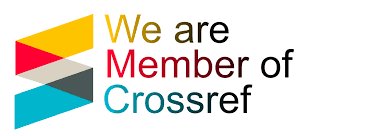ОБНОВЛЕНИЕ АНГЛИЙСКОЙ ТЕРМИНОЛОГИИ В ПАРФЮМЕРИИ И КОСМЕТИКЕ
DOI:
https://doi.org/10.63034/esr-115Ключевые слова:
Косметическая индустрия, порфюмерия, технология, Лексические новшества, Технический прогрессАннотация
В данной статье исследуются процессы и методы интеграции новой терминологии в английский лексический набор, связанный с производством парфюмерии и косметики. Целью данной статьи является анализ процессов и факторов, влияющих на пополнение и эволюцию англоязычного терминологического словаря в парфюмерно-косметической
индустрии. Исследование сосредоточено на изучении того, как новые технологии, глобальные культурные взаимодействия и изменения в потребительских предпочтениях способствуют формированию и адаптации специализированной лексики в этой отрасли. Работа раскрывает механизмы лингвистических инноваций в контексте быстро развивающейся индустрии.
индустрии.
Библиографические ссылки
Nikiforova, N.Y., Gavrilyuk O.O., & Galitskaya E.A. (2019). The register of names of perfumes
and cosmetics as a reflection of social stratification.
Biletskaya, T., Galitskaya E. (2021). The interaction of nomination types in the sphere of perfumery and cosmetic naming.
Binder, Si. (2022). The impact of globalization on specialized Italian and German languages:
Anglicisms in the language of beauty.
Gavrilyuk, O.O., Galitskaya E.A. (2020). Intentionality and acceptability as standards of textuality in the names of perfumes and cosmetics.
Felber, M. (2002). Terminology Manual: Paris: UNESCO, Inform, 426 [in English].Kohli, C., Suri, R. (2000). Brand Names that work: A study of the Effectiveness of Different
Types of Brand Names. Marketing Management Journal, 10(2), 112-120 [in English].
Jones, G. (2011). Globalization and Beauty: A Historical and Firm Perspective.
EUROAMERICA, 41(4), 885-916 [in English].
Doxit, S. (2009). Fine Fragrance Business Trends. Chemical Business, 23 (6), 11-26 [in English].
Chernatony, L., de Mc.Donald, M., Wallance, E. (2011). Creating Powerful Brands. New York:
Taylor and Francis, 268 [in English].
Geeraers, D. (2010). Theories of lexical semantics. Oxford: Oxford University Press, 341 [in
English].
Fauconnier, G., Turner, M. (2002). The way we think: conceptual blending and the Mid's Hidden Complexities: New York: Basic Books, 298 [in English].
Algeo, J., Algeo, K. (2000). Onomastics as an Interdisciplinary Study. Names, 148 (3/4), 265-
[in English].
Briot, E. (2007). Fashion Sprayed and Displayed: The Market for Re-perfumery in NineteenthCentury Paris. Proceedings of the Economic History Society Annual Conference: Exeter: University
of Exeter, 69-72 [in English].
Frisson, S., Pickering, M. (2007). Obtaining a figurative interpretation of a word: support for
underspecification. Metaphor and Symbol, 16, 149-174 [in English].
Gibbs, Raymend, W. (2001). Evaluating contemporary models of figurative language understanding. Metaphor and Symbol, 16, 317-333 [in English].
Anholt, S. (2003). Brand New Justice: the upside of global branding. Oxford: Butterworth
Heinemann, 272 [in English].
Geeraers, D. (2010). Theories of lexical semantics. Oxford: Oxford University Press, 341 [in
English].
Grossenbachen, P.G., Lovelce, C.T. (2001). Mechanisms of synaesthesia: cognitive and psychological contains. Trends cognitive science, 1(15), 36-41 [in English].
Brinker, K. (2011). Linguistic Text Analysis [Linguistische Textanalyse]. Berlin: Erich Schmidt,
[in German].
Briot, E. (2007). Fashion Sprayed and Displayed: The Market for Re-perfumery in NineteenthCentury Paris. Proceedings of the Economic History Society Annual Conference: Exeter: University
of Exeter, 69-72 [in English].
Doxit, S. (2009). Fine Fragrance Business Trends. Chemical Business, 23 (6), 11-26 [in English].
Опубликован
Как цитировать
Выпуск
Раздел
Категории
Лицензия
Copyright (c) 2024 Нитто Д.Н, Сулейменова Е

Это произведение доступно по лицензии Creative Commons «Attribution» («Атрибуция») 4.0 Всемирная.





